The Reiki Digest for May 2, 2007: Echo chamber
POP QUIZ: What is this? Where is this? And what (if anything) does it have to do with Reiki?

Click on the photo or see below to find out
Echo chamber
Hel-lo-lo-lo-lo! Today we explore the echo-echo-echo chamber-chamber-chamber effect in cyber-cyber-cyber-space-space-space. Rumors about regulatory threats to Reiki and other natural modalities have been bouncing around the Internet in recent weeks, particularly here in the United States. The proposed Food and Drug Administration document in question was never a threat to Reiki, as was clear to anyone who actually read the document. The Reiki Digest received more than 60 e-mails in April containing some version of the false report that a new FDA document would reclassify all or most natural healing modalities and thus prohibit their use, so two weeks ago, I followed the links in those e-mails all the way to the document itself, posted on the FDA web site. And then I took the time to read the document. I found nothing in there that seemed to be forbidding anything, and I said so here. I posted a link to it and asked you to read it and see for yourself. I don't know how many people forwarded my brief debunking of the rumor, or the link to the actual document, but none came back to me. Meanwhile, the e-mails with the false warnings kept coming in.
And then, with just hours to go before the deadline for public comment on the proposed document, I finally got a message from, well, a Celeb-Reiki -- William Lee Rand, editor and publisher of The Reiki News, a print quarterly primarily about Rand's well-known Reiki programs, with the subject line, "Information on FDA Ruling Not Factual." The message debunked the rumor and included a link to the document. The Reiki Digest commends Mr. Rand doubly, once for not having propagated the rumor himself, and again for spreading the word that it was false. I'm still receiving a wave of forwards of that message, but I expect that will subside soon.
When in doubt, go to the source, or as close to the source as you can get.
Speaking of going to the source, our Special Correspondent Michelle Shinagawa has now rested up from her journey to Japan and begun posting reports with photos, including the mystery photo at the beginning of this week's Digest.
Here's another of Michelle's photos:

To see more, and read all about it, visit Michelle's blog.
Time now for our regular Reiki Roundup, and this week we've got quite a haul. We begin, inexplicably, on Wall Street, where TheStreet.com features an article headlined "Reiki's Healing Touch" under the category "Personal Finance." Writer Danielle Sonnenberg never explains what Reiki might have to do with investments, not even to point out that it can be a good investment in yourself.
Instead, she includes a lot of details that don't usually show up in articles about Reiki, including the "names" of two Reiki symbols. Unlike stock ticker symbols, Reiki symbols and the sounds generally associated with them are generally not discussed publicly (though they can easily be found on the Internet). We wonder why the Reiki practitioner(s) interviewed for the article mentioned the symbols, or whether the reporter found that information online and out-of-context.
Sonnenberg writes that "Most believe Mikao Usui, a Japanese physician and monk, started the practice in the mid-19th century after a period of isolated meditation." Most of WHOM believe that? Usui, who was not a doctor, was born in the mid-19th century, and developed Reiki not at birth but in the early 20th century. I've never met anyone who believed Usui developed Reiki as a child!
The article includes at least one other surprise:
"Most reiki does not involve actual touching, though The hands are held at a distance, usually a few inches or more" -- as a Reiki Master in both Western and Japanese lineages, I find that quite surprising.
On to the west coast of the United States, where the Seattle Post-Intelligencer features an article that uses the "some say...others say" approach rather than "most believe..." The article is headlined, "UW study examines possibe benefits of Reiki" and subtitled, "Some swear by the Japanese treatment, others say it is simply quackery." Who says it's quackery? The proprietor of the controversial web site quackwatch.com, who also considers such time-tested modalities as acupuncture and massage therapy to be quackery. And then there are those who charge that quackwatch.com is quackery. That's the problem with the "some say...others say" cliche in journalism: there are rarely only two sides to a story. The P-I article also includes several commonly repeated errors about Reiki: for the record, it is not an "ancient practice," nor did it "emerge" in the 1800s. The article also states that Reiki "follows a set pattern of about a dozen hand positions" -- some practitioners may do it that way, and the study may require it, but most practitioners don't just follow a set pattern.
For our third and final feature on Reiki, we travel back to the east coast to the Asbury Park Press in New Jersey for an article headlined "More than Medicine." The best part of the article is a quote from oncologist Dr. Jeffrey Silberberg: "Nobody uses these treatments in lieu of standard medical practices," he says, "but as long as they make patients feel good, feel positive and do no harm, then it becomes a way to improve the quality of life for patients."
Bingo, Dr. Silberberg!
The problem with all these erroneous claims about Reiki -- or anything -- is that the more of them there are out there in the echo chamber of cyberspace, the more credible they seem to the uninformed because so many people are repeating the same claims, regardless of whether those claims are true.











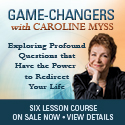






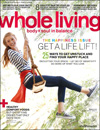

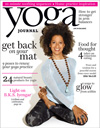
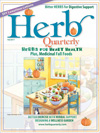
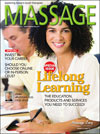
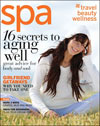
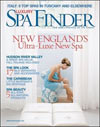
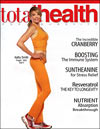






0 Comments:
Post a Comment
<< Home